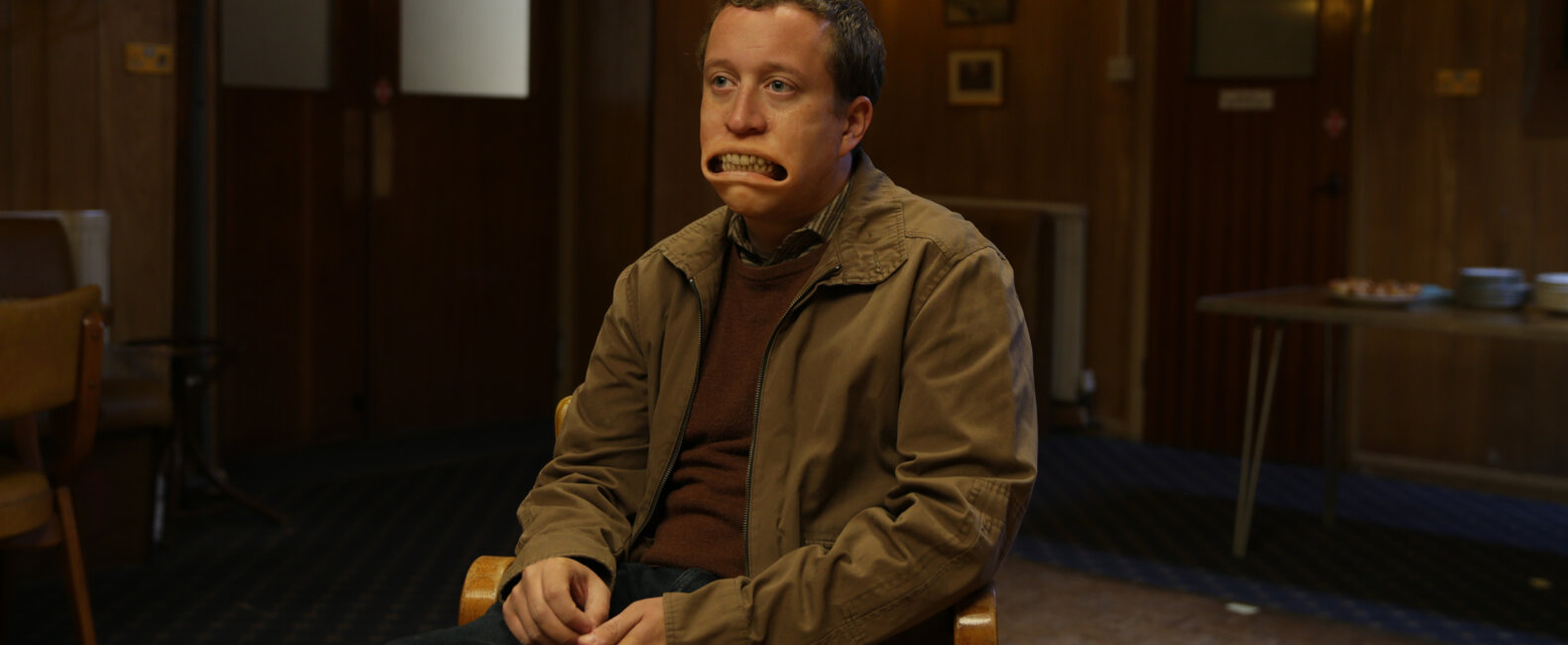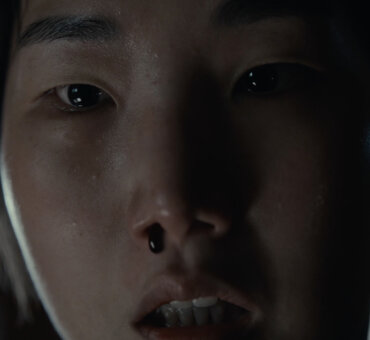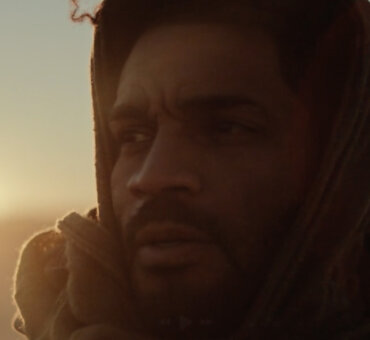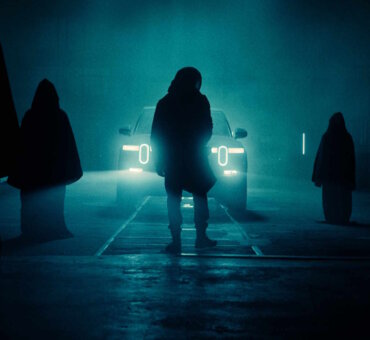Luke Taylor and Chris Barrett — the creative duo behind the lauded directing studio Us — never meant to be directors. In fact, when they first met in university, they were graphic design students. It was only after they’d created a number of acclaimed music videos (including one for Radiohead’s Thom Yorke) that Luke and Chris decided to make the transition from graphic design into film directing. Why? Why else? Because it’s fun. “That’s how most of our decisions are made,” Luke told us recently.
Cautionary Tales — their first foray into narrative filmmaking — tells the story of a group of social outcasts afflicted by the ailments our parents always warned us about. Staying in the tub too long. Making funny faces. Telling lies. The film is silly, surreal, and yet oddly resonant. “It comes down to relatability,” Chris says. “And also authenticity. Even if the character exists in a fantastical world, there is something about him that feels real.” Chris is right: If you’ve ever felt like an outcast — even just a little bit, even for a second — then we think you’ll find something relatable in this strangely beautiful, expertly executed film.
Watch it below. Then read our conversation with designers-turned-directors Luke Taylor and Chris Barrett about character-driven stories, resonating themes, and their first narrative short film, Cautionary Tales.
How has coming from graphic design influenced the way you make films?
Luke Taylor: The difference between a graphic designer and a filmmaker comes down to what we were taught to focus on. In graphic design, you’re taught to focus on a veryspecific idea. You learn how to communicate that idea so people understand it immediately. We benefited from learning that — learning how to get our point across quickly and clearly.
Chris Barrett: Moving into directing didn’t feel like a change of direction for us. It was more of an evolution. In a way, we feel like we’re still doing design. It feeds right into our film work.
Luke: The truth is, though, we really enjoy directing and making films. That’s how most of our decisions are made. We want to do stuff that’s fun. That’s how Cautionary Talescame about.
How do you guys begin a project? With your background as designers, how much of a role do storyboards play in your process?
Luke: Chris and I discuss the story a million times. Next, we make hundreds and hundreds of changes to it. Then we make storyboards so everybody else understands what’s in our heads, so that on shoot day people know there’s an order to things. Storyboards work like instructions. But we don’t stick to them too rigidly because we don’t want things to become over-directed or too staged. We want the crew and cast to feel like there’s room to breathe.
Chris: Our process is very back and forth. It stems from how we worked together in university. Luke will go off and write something, and then we’ll go over it together again and again. We try to work everything out so that, on shoot day, it’s pretty much just a matter of putting things into motion. By that point we try to let things happen: Give the actors space, not confuse things by giving them too much direction. Overall, we try to keep things simple.
What kinds of stories do you guys like to tell?
Luke: A lot of directors have a genre. We’ve got friends who love to make horror, and they’re fantastic at it. Or sci-fi. Or whatever. But our approach isn’t tied to a specific genre. We like to create slightly heightened worlds that feel a little bit left of real life. There are so many incredible directors who can tell real-life stories, but we’re drawn to something a little more alternative. At our core, we are most excited by visuals. We want to create something that hasn’t been seen before — create a tone that feels fresh and new.
Chris: There’s something important about seeing things from a different perspective. Flipping the world so you see it upside down. It allows viewers to reassess what they can get out of a story. I guess we like playing with perception. We like to make people smile. Not laugh out loud. Just smile.
Was the story behind Cautionary Tales inspired by things your parents told you growing up?
Luke: When I was a kid, I used to get in trouble for elaborating on stories. My parents called it lying. Maybe that’s why I became a director. [Laughs] But the funny thing was thinking about all the ways our parents lied to us — about what would happen if we swallowed seeds or made funny faces for too long. All of it was unbelievable. So that’s where this story started. Different things our parents had told us and our friends. We knew we were onto something good because everybody had something to add. Everyone related to it. The one I heard the most growing up was the bath one: If I stayed in the bath too long, I would turn into a prune. My mom said that a lot.
Chris: That one’s the best because it actually seems like it’s happening.
Okay, so, being so story driven, this piece relies heavily on the characters. How do you guys determine what makes a good character in a film?
Luke: That’s the million-dollar question, isn’t it? For this project, we wanted the audience to feel sorry for the main character. We wanted there to be that level of sympathy, that level of relatability. We’re all trying to fit into this world. So we wanted a character who embodied that but with vulnerability. I believe that when we see what life is like for someone else, we can then see that things aren’t that bad for us.
Chris: Even if the character exists in a fantastical world, there is something about him that feels real. Something you can relate to if you’ve ever been bullied or felt out of place. For our main character in Cautionary Tales, there is something in his eyes. You believe him. You relate to him like he’s real. That’s what makes him a great character.
Luke: A lot of it comes down to casting. The prune guy, for instance. He came in [to audition] for a different part, but he did such a great job of being obnoxious and a little bit…
Chris: A little bit arrogant. But it was perfect for the prune-guy role, since it would take a lot of arrogance for a kid to stay in a bath long enough to become a prune. We also liked the idea that some of these characters had come to terms with their afflictions. Some of them maybe even enjoyed it. They were getting on with their lives, like a normal person would.
Luke: The most important character for us was the group leader. We honestly weren’t quite sure what the tone of the film would be until we found her. Would it be funny? Dry? Self-aware? When we found the actress to play the group host, she got the balance of it completely right, and then everything else fell into place. Suddenly everything made sense. Our ultimate goal with characters is to tell the story through them. To tell a small, simple story that people can engage in emotionally. We want people to watch it and feel something.
What did you learn about creating character-driven stories by making this film?
Luke: What you learn when you write a screenplay is how hard it is to nail the nuances of the way people speak. There’s a balancing act between what you write on the page and what an actor brings to it on the day. That’s what’s exciting. But it’s also really challenging. Another thing we learned was how important subtlety is. A lot of times the actors would play up their afflictions a bit too much. We learned the best way to play it was straight. You have to give the audience credit. They’ll understand. They’ll get it. You don’t need to overdo it for them.
I don’t know if there’s any other way of learning these things other than just jumping in. Someone once said the funny thing about directing is there’s no crash course. No testing things out. You’ve got to step in and try it. And either you can do it, or you can’t.
What makes for a good ending?
Luke: Less is more. A good ending doesn’t give you all the answers. It’s not told to you because the story hasn’t finished yet. Sometimes it comes when you least expect it.






